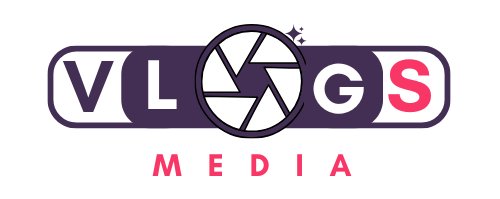The world of cryptocurrencies and blockchain technology has seen its ups and downs. After the massive boom and subsequent crash in 2021, Web3—often hailed as the future of the internet—seemed to take a back seat in the global conversation. But in 2025, a prominent crypto brand is predicting a major Web3 comeback, and this time, it could be permanent.
In this blog, we explore why Web3 is making a comeback, what that means for consumers and businesses, and how one crypto brand’s prediction of its resurgence could change the way we interact online in the near future.
What is Web3? A Quick Summary
Before we dive into the future, let’s quickly recap what Web3 is all about.
Web3 is often referred to as the next generation of the internet. Unlike Web2, which is dominated by centralized platforms like Google, Facebook, and Amazon, Web3 is based on decentralization. This means that it empowers individuals by allowing them to own and control their own data, content, and assets. Some of the key features of Web3 include blockchain technology, cryptocurrencies, decentralized applications (dApps), and non-fungible tokens (NFTs).
In theory, Web3 has the potential to create a more open, transparent, and user-driven internet. However, despite its promising prospects, it has faced challenges such as regulatory hurdles, technical limitations, and consumer skepticism.

Why Web3 is making a comeback
So why are crypto brands predicting a Web3 comeback in 2025? Several factors point to a resurgence of interest and development in this space. Let’s break down the main reasons for this predicted comeback:
1. Increasing adoption of blockchain technology
Blockchain, the technology behind Web3, has seen increasing adoption across various industries. In the past, it was primarily associated with cryptocurrencies, but now it is being used for a wider range of applications, such as supply chain management, digital identity verification, and voting systems.
Many industries are beginning to realize blockchain’s potential to improve security, transparency, and efficiency. This widespread adoption is critical to the future success of Web3, as it provides a foundation for decentralized networks to thrive.
2. Increased consumer demand for privacy
In the wake of frequent data breaches, privacy scandals, and growing concerns about how major tech companies handle user data, consumers are more conscious of their digital privacy than ever. This has created a demand for alternatives to traditional platforms where users can have more control over their data.
The decentralized nature of Web3 offers just that. It promises to give users the ability to control their own personal data and decide how it is shared. With privacy concerns growing, people are increasingly attracted to the idea of a decentralized internet that puts user sovereignty at the forefront.
3. Technological improvements
One of the biggest obstacles Web3 faced in its early stages was the technology itself. Blockchain networks were often slow, expensive, and difficult to scale. However, technological advances in recent years have significantly improved the infrastructure behind Web3 applications.
For example, Ethereum, the most popular blockchain for dApps and NFTs, is moving from proof-of-work to proof-of-stake with its Ethereum 2.0 upgrade. This change will make transactions faster, cheaper, and more energy efficient. In addition, other blockchains such as Solana and Avalanche are becoming increasingly popular due to their scalability and lower costs.
As these technologies evolve, Web3 will become more user-friendly and accessible to a wider audience.

4. The Rise of NFTs and the Metaverse
The boom in NFTs (non-fungible tokens) and the increasing popularity of virtual worlds (the metaverse) are contributing to Web3’s comeback. NFTs have revolutionized the way digital art and assets are bought, sold and owned, creating an entirely new market for creators and collectors.
Meanwhile, the concept of the metaverse – virtual worlds where users can socialize, shop and create – has captured the imagination of consumers and brands. Many Web3 projects are now focused on developing immersive experiences within the metaverse, creating new ways for users to interact with each other and with digital content.
As NFTs and the metaverse become more popular, Web3 will likely play an even more central role in shaping these new digital experiences.
5. Institutional Investment and Support
In recent years, we have seen a shift in how traditional financial institutions view cryptocurrencies and blockchain technology. Major players in the financial sector such as PayPal, JPMorgan, and Fidelity have made significant investments in crypto and blockchain.
This increased institutional support is helping to legitimize the crypto space and give Web3 the support it needs to grow. Additionally, companies in sectors such as gaming, entertainment, and finance are beginning to experiment with Web3 technologies, which will further drive adoption and innovation.
6. Regulatory Clarity
Another factor contributing to Web3’s predicted comeback is increasing clarity around regulation. In the early days of blockchain, the lack of regulatory frameworks created uncertainty and fear of government action. However, in 2025, many countries are beginning to establish clear rules for regulating cryptocurrencies and decentralized technologies.
While regulatory challenges remain, clearer guidelines will give businesses and consumers the confidence to get involved in Web3 projects, knowing they are operating within a legal framework. This clarity can help Web3 gain acceptance and trust among the general public.
What a Web3 comeback means for consumers and businesses
The resurgence of Web3 will have significant implications for both consumers and businesses.

For consumers:
Ownership and control: Consumers will have more control over their personal data, digital assets, and online identities.
New digital experiences: The rise of the metaverse and NFTs will provide consumers with new ways to engage with digital content and experiences.
Privacy and security: With Web3’s focus on decentralization, users can expect safer and more private online interactions.
For businesses:
New revenue streams: Businesses will be able to generate new revenue streams through NFTs, tokenized assets, and decentralized finance (DeFi) applications.
Stronger customer relationships: Web3 allows businesses to connect with customers in more authentic and transparent ways, building stronger, more loyal communities.
Innovation in Marketing: As Web3 becomes more mainstream, companies will explore new marketing strategies, such as virtual goods, branded NFTs, and metaverse advertising.
Conclusion: The Future of Web3 in 2025 and Beyond
In 2025, Web3 is poised for a significant comeback, driven by technological advances, consumer demand for privacy, and growing institutional support. As decentralized technologies become more sophisticated, Web3 will likely reshape the way we interact with the internet, offering users more control, security, and exciting new experiences.
For companies, leveraging Web3 technologies could open up innovative new opportunities and allow them to stay ahead of the curve in an increasingly digital world. As the lines between the virtual and physical worlds blur, Web3 promises to create a new digital landscape that is more inclusive, transparent, and user-centric.
The comeback of Web3 isn’t just a trend—it’s the future of the internet.







